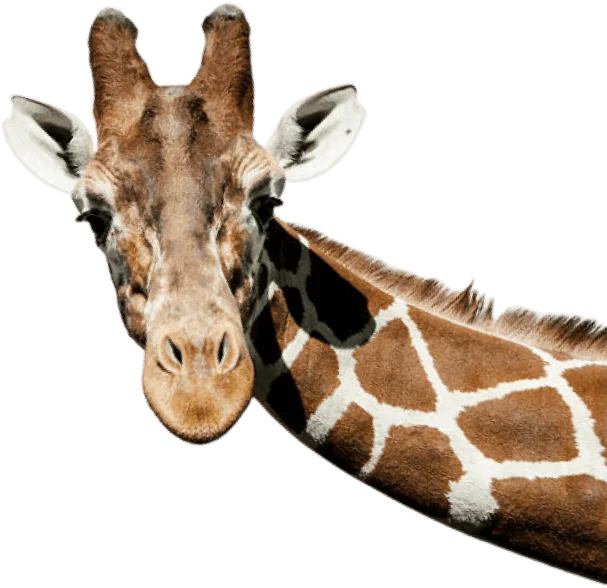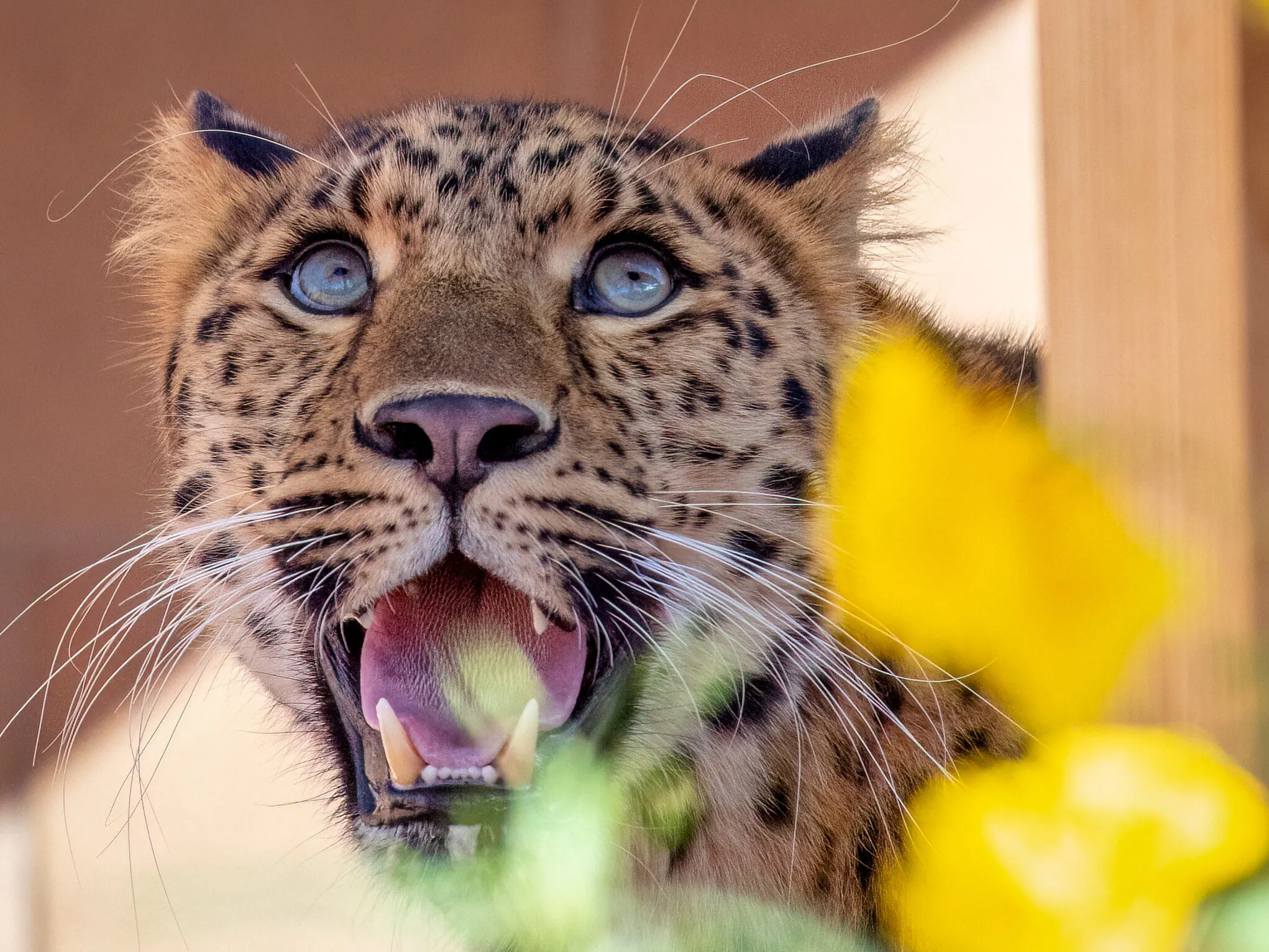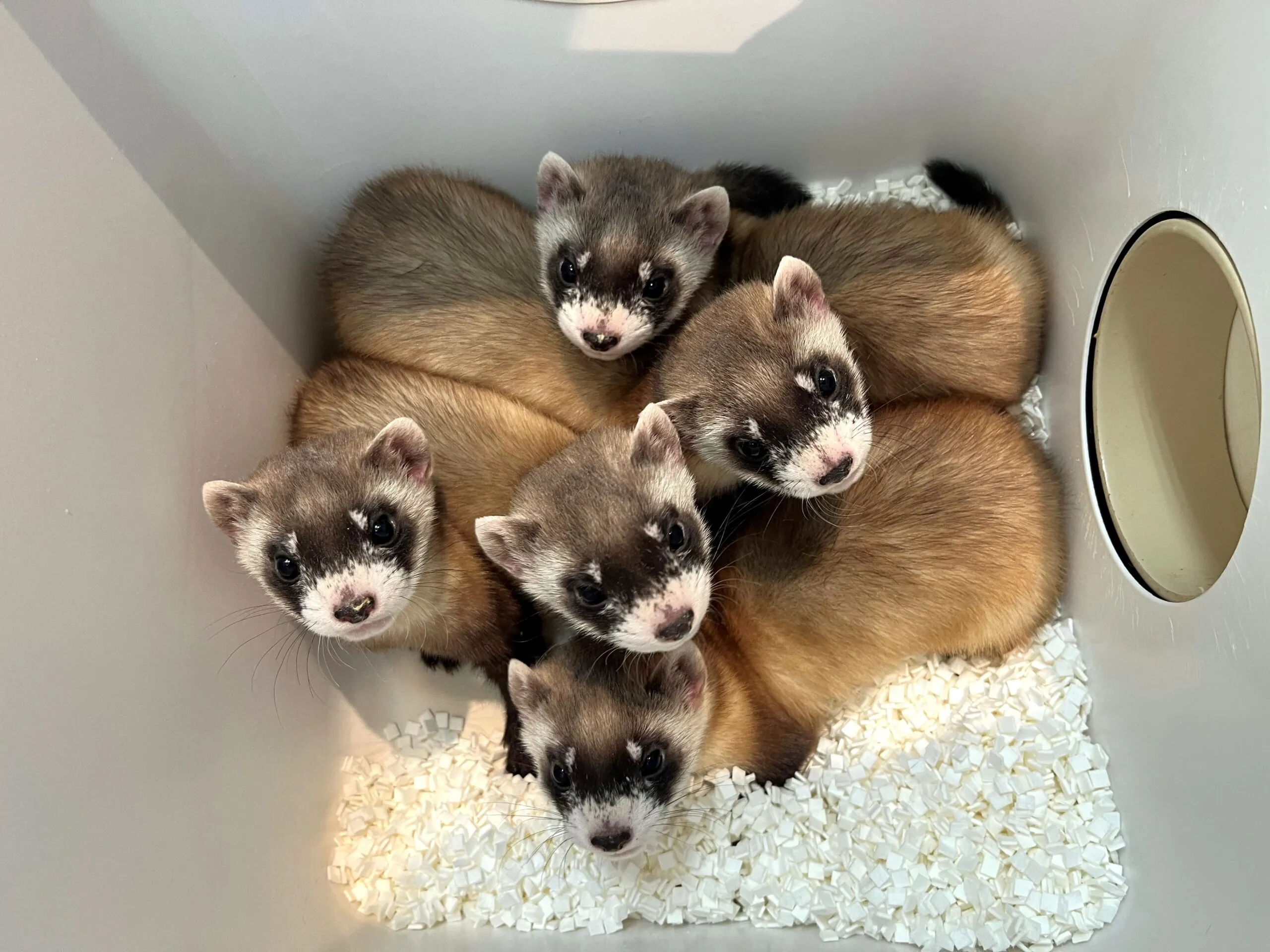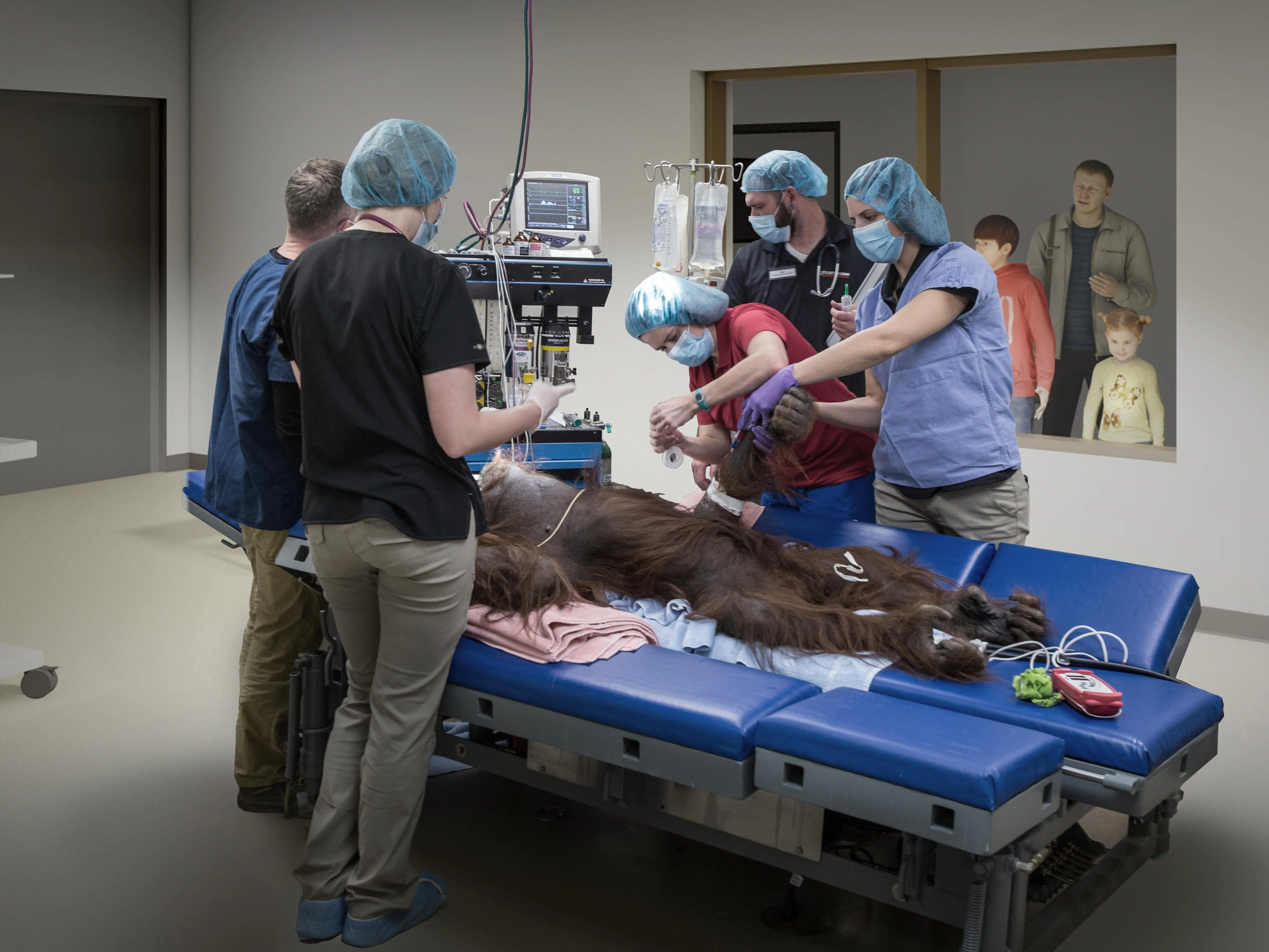Arizona walking stick
diapheromera arizonesis
Camouflage
Walking sticks have a variety of ways to avoid detection by predators. Their bodies match the color and shape of a twig, and when resting they extend their front legs to appear longer. When disturbed, they sway back and forth to mimic a twig in the breeze. A walking stick that has been captured can sacrifice a leg to the predator and then regrow it in just a few weeks. As a last resort, an Arizona walking stick will drop to the ground and lay motionless to avoid being eaten.
Big and Small
Stick insects belong to the family Phasmatodea, which means “phantom” or “apparition.” There are more than 3,000 known species of stick insects around the world. The smallest species belong to the genus Timema of North America and are a mere half-inch long. The largest species belong to the genus Phobaeticus of Asia. The body length of these insects can exceed 14 inches, and with their legs stretched out in their resting position, the overall length can be as much as 21.5 inches! Now THAT’S a big bug!
Beneficial Bugs
We are still learning about the specific roles that stick insects have in their respective environments. In most areas, stick insects decompose plant material and are an important food source for other animals. In the rainforests of South America, stick insects graze heavily on the small, fast growing plants that take root in gaps on the forest floor. This benefits the larger, slower growing plants because it means less competition for the limited nutrients in the soil.

Diet: leaves, berries
Zoo Diet: browse
Habitat: desert
Length: 3 – 4 in
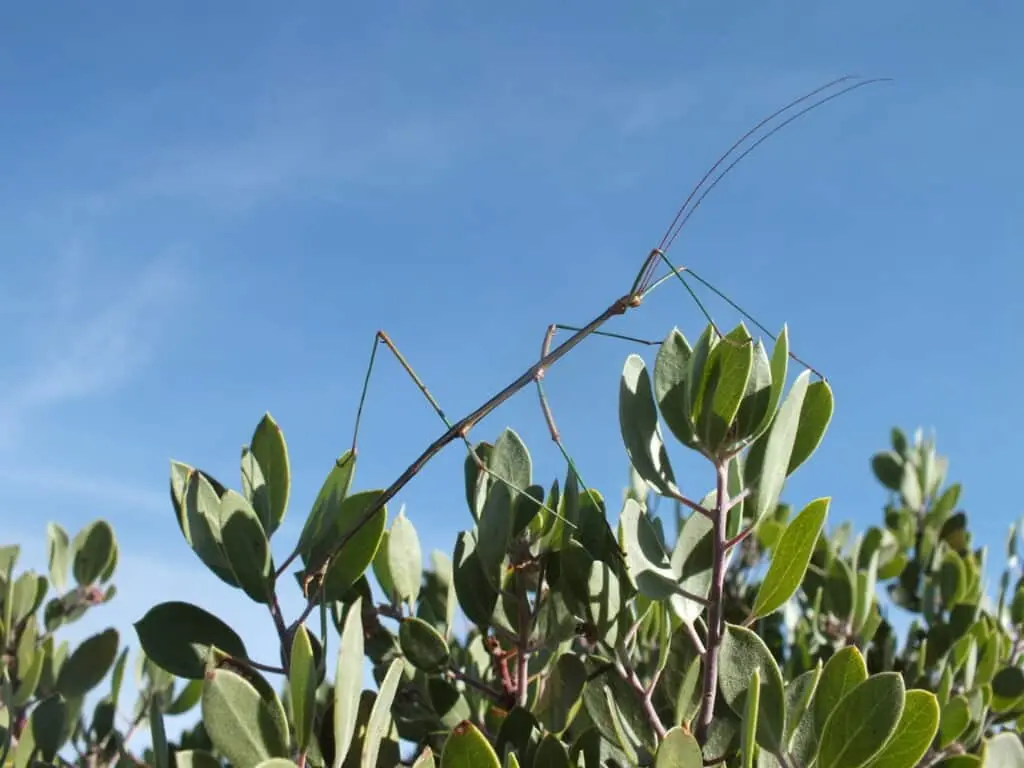
Plan your visit today!
The Phoenix Zoo is one of the largest non-profit zoos in the U.S., caring for over 3,000 animals, with nearly 400 species represented, including many threatened/endangered species.
